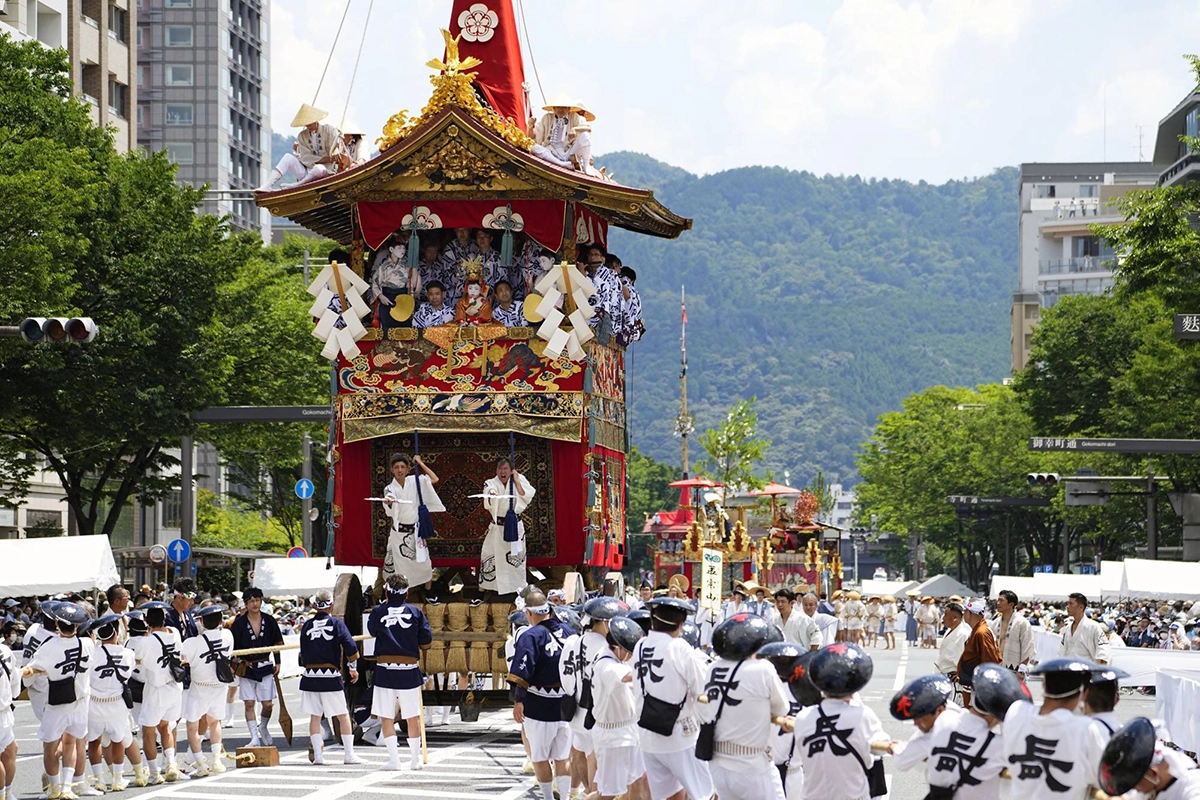Gion Matsuri: A Journey into Kyoto’s Ancient Heart”
Japan, a land of timeless traditions and rich cultural heritage, beckons travelers with a unique blend of the modern and the ancient. In the heart of this captivating nation, Kyoto stands as a living testament to its storied history. And there’s no better way to immerse yourself in Kyoto’s cultural tapestry than by experiencing the Gion Matsuri, one of Japan’s most iconic and enduring festivals. Held annually during the month of July, this month-long celebration is a vibrant testament to the spirit and beauty of Japanese culture.
Dating back to 869 AD, Gion Matsuri carries with it an incredible history that goes beyond the picturesque processions and street food stalls. It originated during a time when Kyoto was struck by a devastating plague, decimating the population. To combat this dire situation, the Emperor at the time ordered a series of religious rituals to appease the gods and bring an end to the epidemic. One of these rituals, the Gion Shrine procession, has evolved into the annual spectacle we know today.
The heart of Gion Matsuri beats on two crucial dates in July: the 17th and the 24th. On July 17th, the city awakens to the majestic sight of “yamaboko,” elaborately adorned floats that meander through the charming streets of Kyoto. These floats are not mere static displays; they are brought to life by the traditional melodies of musicians playing ancient Japanese instruments. The yamaboko floats fall into two categories: the “hoko,” towering and slender structures reaching up to 25 meters in height, and the “yama,” shorter and wider counterparts. Every float is meticulously crafted by different neighborhood associations in Kyoto, their designs closely guarded secrets until the day of the festival.
On July 24th, the city’s energy surges once more as the “mikoshi,” or portable shrines, take center stage. Local residents carry these sacred shrines through the streets, believing it brings good fortune and prosperity to their lives. The sight of people carrying these elaborately decorated mikoshi through the city is a testament to the enduring faith and community spirit that underpins Gion Matsuri.
Beyond the spectacular processions, Gion Matsuri offers an enchanting array of street food and traditional arts and crafts. As you navigate the festival’s bustling streets, you’ll have the chance to sample local delicacies such as “yatsuhashi,” a sweet rice cake filled with red bean paste, or “kakigori,” a delectable shaved ice dessert infused with colorful syrup. These culinary delights not only tantalize the taste buds but also provide insight into the rich culinary traditions of Kyoto.
Despite its deep-rooted history, Gion Matsuri has managed to evolve over the centuries, reflecting the changing face of Kyoto. While it continues to honor its ancient origins, the festival has seamlessly blended with the modern, attracting visitors from all corners of the globe. It’s a living, breathing testament to Kyoto’s timeless traditions, offering a captivating glimpse into the soul of Japan. Whether you’re a history buff, a food enthusiast, or simply a lover of vibrant cultural experiences, Gion Matsuri is a celebration that transcends time and connects you with the heart of Kyoto.
As you stand amidst the enchanting swirl of colors, music, and aromas, you’ll feel a profound connection to the essence of Japan. Gion Matsuri is more than a festival; it’s a portal to the past, a celebration of the present, and an invitation to explore the profound beauty of Japanese culture. In the heart of Kyoto, where tradition and modernity coexist harmoniously, Gion Matsuri beckons you to become a part of its rich tapestry, ensuring your journey into the ancient heart of Japan is an unforgettable one.
